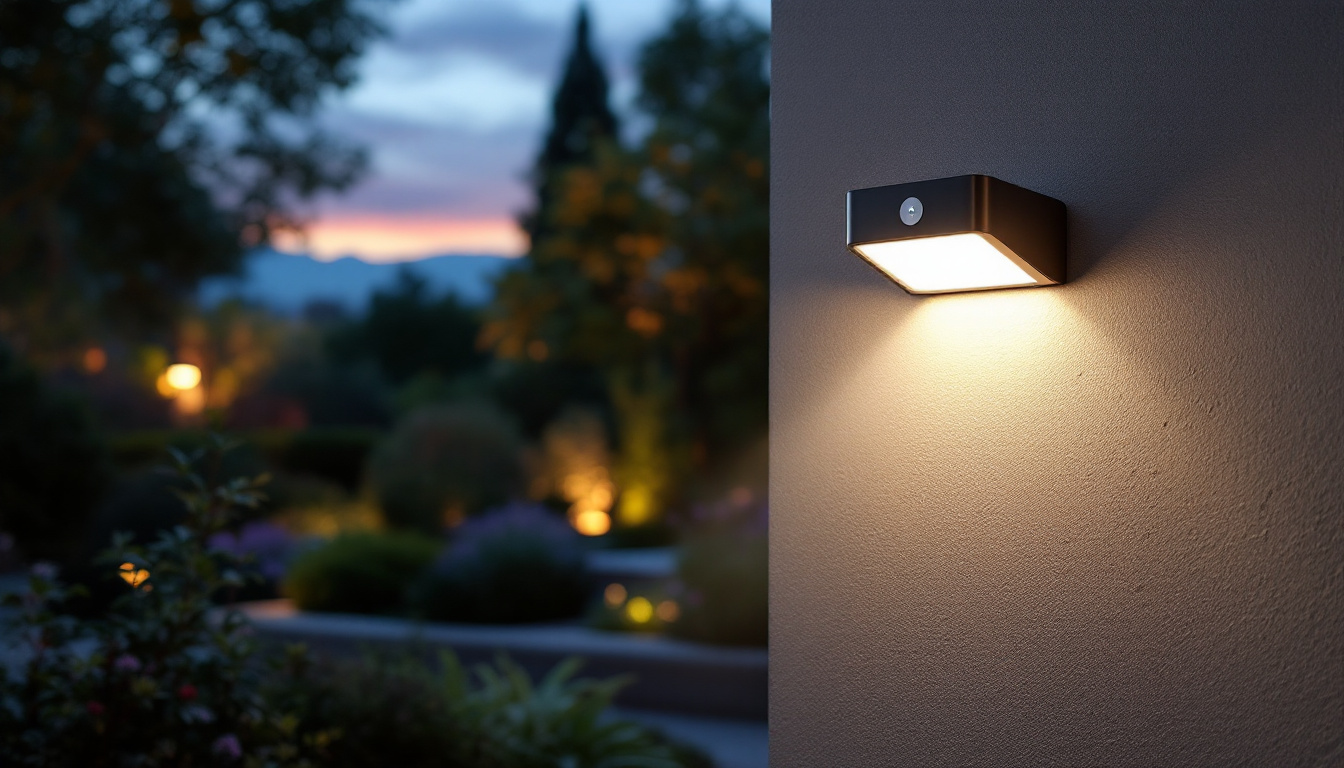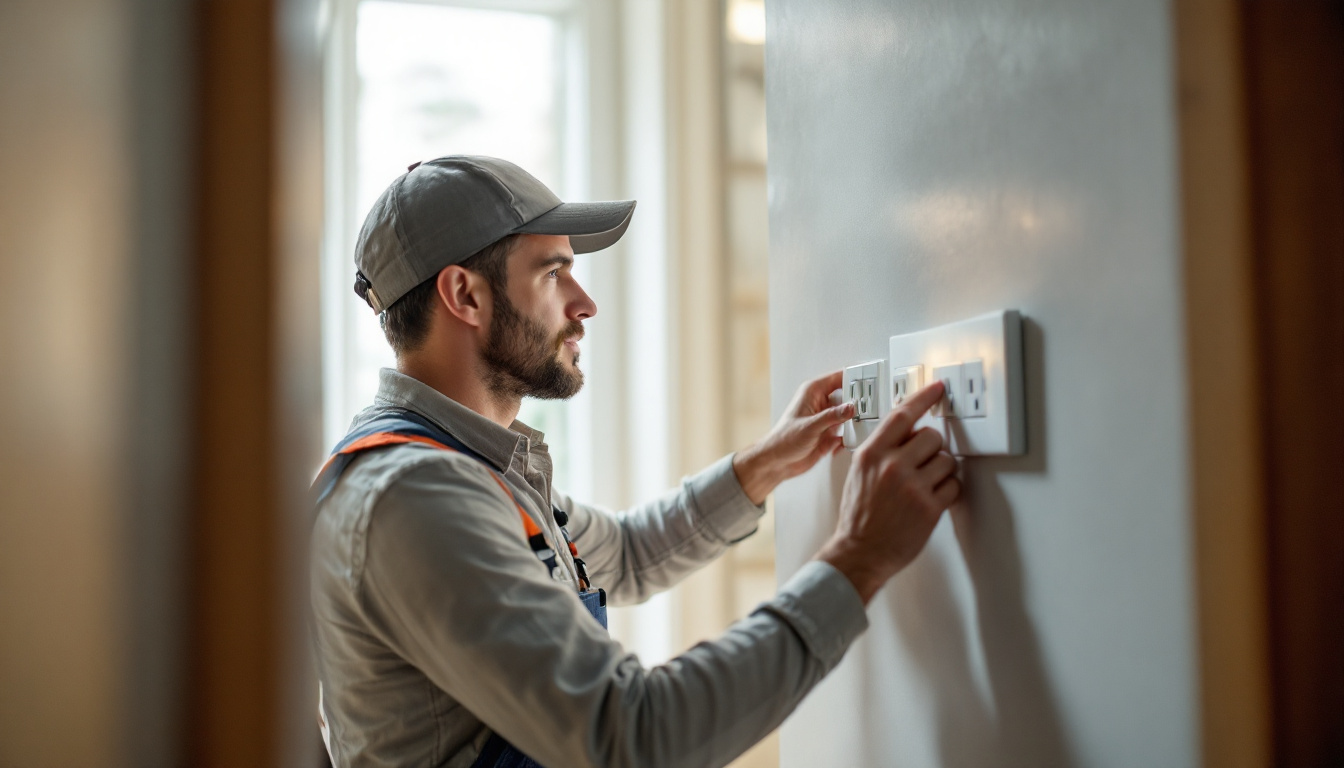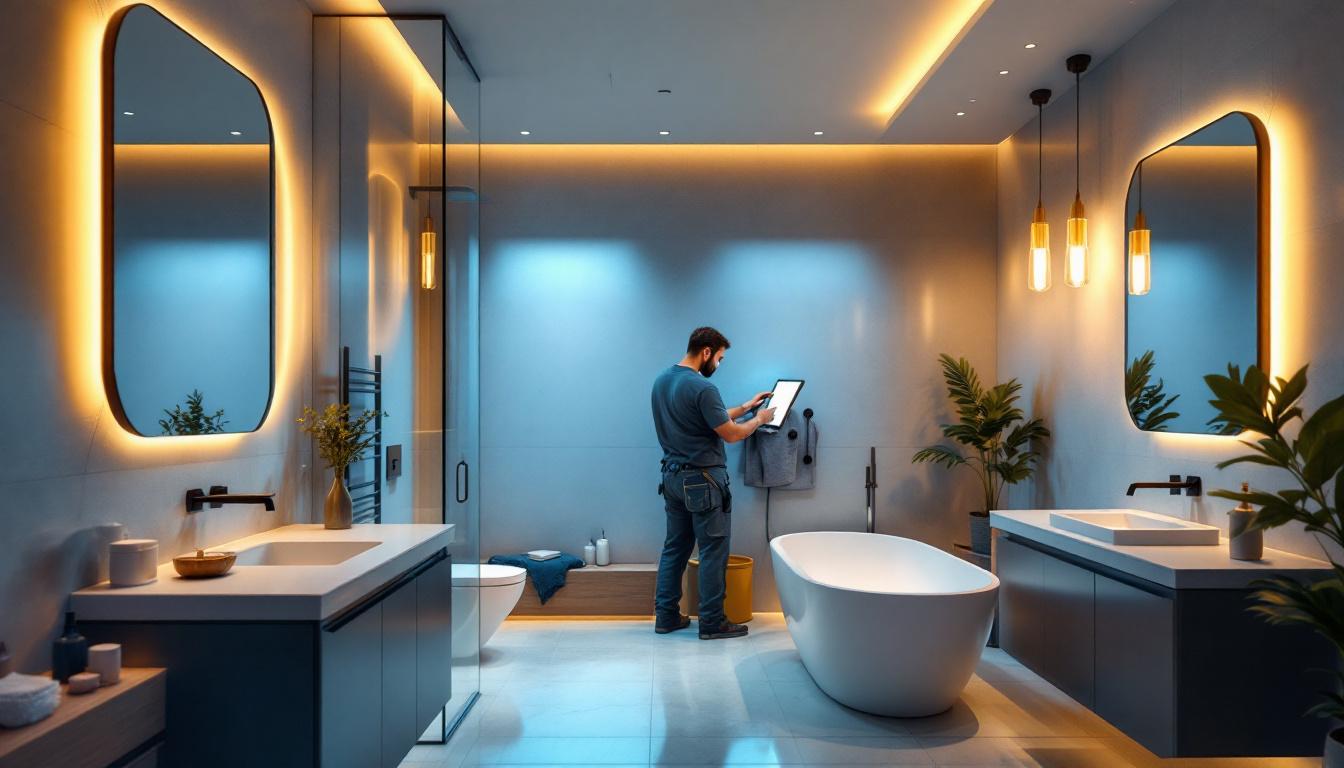
Outdoor motion sensor lights have become an essential component in modern security and outdoor lighting solutions. Among these, downward firing models have gained popularity due to their unique design and functionality. These lights not only enhance safety but also add an aesthetic appeal to outdoor spaces. For lighting contractors, understanding the intricacies of these fixtures can significantly impact project outcomes and client satisfaction.
Downward firing outdoor motion sensor lights are designed to direct light downward, illuminating pathways, driveways, and entryways. This targeted illumination reduces light pollution and enhances visibility where it is most needed. As the demand for energy-efficient and effective outdoor lighting solutions continues to rise, it is crucial for lighting contractors to stay informed about the latest trends and technologies in this area.
One of the standout features of downward firing motion sensor lights is their ability to adapt to various environmental conditions. Many models come equipped with adjustable sensitivity settings, allowing homeowners to customize the detection range based on their specific needs. This flexibility ensures that the lights activate only when necessary, thus conserving energy and prolonging the lifespan of the bulbs. Additionally, some advanced models incorporate smart technology, enabling users to control the lights remotely via smartphone apps. This not only enhances convenience but also provides an added layer of security by allowing homeowners to monitor their property in real-time, even when they are away.
Moreover, the design of downward firing lights often includes weather-resistant materials, making them suitable for a variety of climates. This durability is essential for maintaining functionality and appearance over time, especially in areas prone to harsh weather conditions. With options ranging from sleek modern aesthetics to more traditional designs, these lights can seamlessly blend into any outdoor decor. As lighting contractors explore different styles and functionalities, they can offer clients tailored solutions that meet both their practical needs and aesthetic preferences, ultimately enhancing the overall value of their outdoor spaces.
One of the primary advantages of downward firing motion sensor lights is their ability to enhance security. By illuminating specific areas when motion is detected, these lights deter potential intruders and provide peace of mind for homeowners. The focused beam of light ensures that critical areas, such as doorways and garages, are well-lit, making it difficult for anyone to approach unnoticed.
Moreover, many modern motion sensor lights come equipped with adjustable sensitivity settings, allowing contractors to customize the activation range based on the specific needs of a property. This feature is particularly beneficial in residential areas where false alarms can be a concern.
Energy efficiency is a significant consideration in today’s lighting solutions. Downward firing outdoor motion sensor lights often utilize LED technology, which consumes considerably less energy compared to traditional incandescent bulbs. This not only reduces electricity bills for homeowners but also contributes to a more sustainable environment.
Additionally, the motion sensor feature ensures that lights are only activated when necessary, further conserving energy. For contractors, recommending energy-efficient solutions can enhance their reputation and appeal to environmentally conscious clients.
Beyond functionality, downward firing motion sensor lights offer aesthetic benefits. Available in various designs and finishes, these lights can complement the architectural style of a home or landscape. Whether integrated into a modern design or a more traditional setting, these fixtures can enhance the overall visual appeal of outdoor spaces.
Furthermore, the versatility of these lights allows them to be used in various applications, from residential properties to commercial establishments. Contractors can leverage this versatility to meet diverse client needs, ensuring that they have the right solutions for every project.
Proper placement of downward firing motion sensor lights is crucial for optimal performance. Contractors should assess the layout of the property and identify key areas that require illumination. Common locations include entryways, driveways, and patios. It is essential to ensure that the lights are positioned to avoid obstructions that could block the light beam or interfere with motion detection.
Additionally, considering the height at which the lights are installed can significantly impact their effectiveness. Lights installed too high may not detect motion effectively, while those installed too low may be susceptible to damage or vandalism. A careful balance must be struck to maximize both security and functionality.
When installing downward firing outdoor motion sensor lights, proper wiring and power supply are critical. Contractors should ensure that the electrical connections comply with local codes and regulations. This may involve running new wiring or integrating the lights into existing circuits.
Using weatherproof fixtures and connectors is essential to prevent moisture intrusion and ensure longevity. Additionally, contractors should consider the power source, as some lights may require a dedicated circuit, while others can be connected to existing outdoor lighting systems.
After installation, thorough testing and calibration of the motion sensor lights are necessary to ensure they function correctly. This includes adjusting the sensitivity settings and testing the range of motion detection. Contractors should walk through the area to confirm that the lights activate as intended and provide adequate illumination.
Regular maintenance checks should also be scheduled to ensure the longevity and performance of the lights. This includes cleaning the fixtures and checking for any signs of wear or damage that could affect their operation.
One of the most common challenges with motion sensor lights is the occurrence of false alarms. This can be caused by pets, passing vehicles, or even swaying branches. To mitigate this issue, contractors can recommend models with adjustable sensitivity settings, allowing homeowners to customize the activation range based on their specific environment.
Additionally, strategic placement of the lights can help minimize false triggers. Avoiding locations near busy streets or areas with excessive movement can significantly reduce the likelihood of unnecessary activations.
Outdoor lighting fixtures are constantly exposed to the elements, making weather resistance a critical factor. Contractors should prioritize lights that are rated for outdoor use and constructed from durable materials that can withstand harsh conditions. Features such as sealed enclosures and UV-resistant finishes can enhance the longevity of the lights.
Regular maintenance is also essential to ensure that the fixtures remain in optimal condition. This includes cleaning any debris that may accumulate and checking for signs of corrosion or damage.
As smart home technology continues to evolve, many homeowners are looking for outdoor lighting solutions that integrate seamlessly with their existing systems. Downward firing motion sensor lights can be connected to smart home hubs, allowing for remote control and monitoring via smartphone apps.
Contractors should stay informed about the latest smart lighting technologies and be prepared to offer solutions that meet the growing demand for smart home integration. This not only enhances the functionality of the lighting but also appeals to tech-savvy clients.
When selecting downward firing outdoor motion sensor lights, quality and performance should be top priorities. Contractors should look for products from reputable manufacturers known for their reliability and innovation. Features such as adjustable brightness, customizable motion detection zones, and energy-efficient designs can significantly enhance the value of the products offered to clients.
Additionally, reading customer reviews and seeking recommendations from industry peers can provide valuable insights into the performance and durability of various models. This due diligence can help contractors make informed decisions that benefit both their business and their clients.
Warranties and customer support are essential factors to consider when choosing lighting products. A robust warranty indicates the manufacturer’s confidence in their product and provides peace of mind for contractors and clients alike. Understanding the terms of the warranty, including coverage for parts and labor, can help contractors navigate potential issues that may arise post-installation.
Furthermore, reliable customer support from manufacturers can be invaluable when troubleshooting or seeking assistance with installation. Contractors should prioritize partnerships with manufacturers that offer comprehensive support and resources.
The lighting industry is continually evolving, with new technologies and trends emerging regularly. Contractors should make it a priority to stay informed about the latest advancements in outdoor lighting, including innovations in motion sensor technology, energy efficiency, and smart home integration.
Participating in industry conferences, workshops, and training sessions can provide valuable networking opportunities and insights into best practices. By staying current, contractors can position themselves as knowledgeable experts in the field, ultimately benefiting their clients and enhancing their business reputation.
Downward firing outdoor motion sensor lights offer a myriad of benefits, from enhanced security to energy efficiency and aesthetic appeal. For lighting contractors, understanding the intricacies of these fixtures is essential for delivering high-quality solutions that meet client needs. By considering installation factors, addressing common challenges, and staying informed about industry trends, contractors can effectively navigate the evolving landscape of outdoor lighting.
As the demand for innovative and efficient outdoor lighting solutions continues to grow, contractors who invest in their knowledge and skills will be well-positioned to succeed in this competitive market. Embracing the potential of downward firing motion sensor lights can lead to increased client satisfaction and long-term business success.
Ready to elevate your lighting projects with the best in downward firing outdoor motion sensor lights? At LumenWholesale, we provide lighting contractors with the highest quality, spec-grade lighting products at prices that can’t be beaten. Say goodbye to local distributor markups and hello to our extensive selection that meets rigorous industry standards. With free shipping on bulk orders, you can trust that you’re getting premium lighting solutions at the best value — all with the convenience and reliability you deserve. Don’t compromise on quality or cost; choose LumenWholesale for all your lighting needs. Wholesale Lighting at the Best Value.

Explore the critical role of electrical circuit outlets in lighting projects and discover why understanding their intricacies is essential for lighting contractors to ensure safety, efficiency, and optimal performance in every installation..

Discover essential tips and common pitfalls for lighting contractors with Euri.

Discover the top benefits of solar lights with batteries for lighting contractors.

Discover the best bathroom recessed lighting options and learn how lighting contractors can boost efficiency, safety, and aesthetics—unlock expert tips today!.